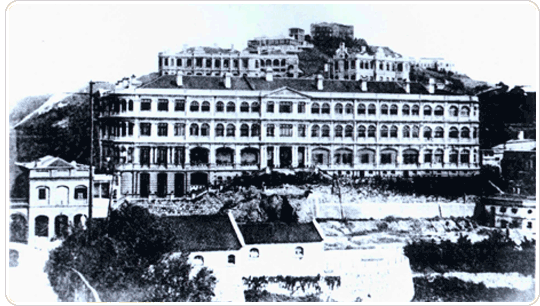HISTORY OF THE PEAK
Standing at 552 metres above sea level, the Peak is the highest mountain on Hong Kong Island and a natural signaling post for incoming cargo ships in the nineteenth century. The more privileged early residents, however, found it the perfect retreat from Hong Kong's scorching summer heat.

Sedan chair
Governor Sir Richard MacDonnell's summer home (circa 1868) was built there to take advantage of the cooler but humid climes. Soon other wealthy residents followed suit. Many of them traversed up and down the steep Peak paths by sedan chair, which were carried by their personal staff of uniformed bearers. From 1904, the Peak was designated an exclusive residential area reserved only for expatriates although this practice ended in 1947.
Further development of the Peak did not really occur until Alexander Findlay Smith, who had worked for Scotland's Highland Railway, managed to petition the Governor, Sir John Pope-Hennessy, in 1881 to operate tram routes. One of them connected the south of Murray Barracks to Victoria Gap on the Peak. The Peak had attracted its prestigious residents since the 19th century.

The Peak Hotel
Mr. Findlay Smith was hoping the tram route would increase visitor traffic and boost business at the erstwhile Peak Hotel, which opened eight years earlier in 1873 on land he owned. Unfortunately, the hotel was destroyed in a fire in 1938.
With a regular and reliable form of public transportation now available, the Peak quickly became renowned for its spectacular views of the city and the harbour. Today, the Peak attracts some seven million visitors a year, making it one of Hong Kong's top tourist destinations.

First generation Peak Tram


